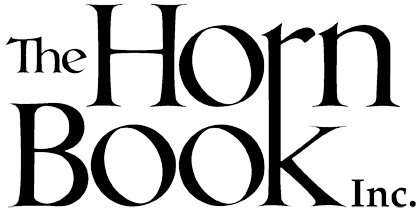Parents and children
In honor of Mother’s Day (May 11), Father’s Day (June 15), and parent figures every day, here are six picture books that highlight a wide range of aspects — from the silly to the serious — of children’s relationships with parents.
In honor of Mother’s Day (May 11), Father’s Day (June 15), and parent figures every day, here are six picture books that highlight a wide range of aspects — from the silly to the serious — of children’s relationships with parents. See also our Five Questions interview with Rebecca Stead and Gracey Zhang about Anything, and the Guide/Reviews Database subject tag Family--Parent and child.
 Mad at Dad
Mad at Dad
by Janie Hao; illus. by the author
Preschool Kids Can 32 pp.
10/24 9781525310263 $19.99
e-book ed. 9781525310737 $13.99
“Sometimes my dad makes me…” begins this expressive narrator; open the two gatefold pages to finish the overwhelming thought: “SOOO MAD!” A standoff at the dinner table (over vegetables) has the defiant narrator storming off to their room. Hao’s emotionally charged illustrations, full of sharp angles, emanata, and strong vivid colors, leave no doubt that the main character has some Big Feelings; five well-placed double-gatefold spreads put their emotions on full display. “SLAM!” goes the bedroom door on a fiery orange-red double-page spread, an emphatic yellow starburst indicating sound and fury. “I DO NOT LIKE BEING MAD!!!” They try some calming techniques, to no avail: venting to stuffed animals, counting, cartwheels. Drawing doesn’t work, either — the bedroom floor begins to warp as if absorbing the child’s frustration. A wildly energetic gatefold spread shows the scowling narrator surrounded by angry crayon drawings and marks “…STILL MAD!” It’s hard to rage for hours, however, and as the sun goes down, both internal and external moods change. Hot pulsing colors and insistent shapes are replaced by quieter twilight purples and simpler compositions. The tone is more subdued: “Luckily, when I’m sad (and still a bit mad)… // …here comes Dad” with a snack and a hug. This emotional journey of a picture book reassures listeners that it’s okay to feel and show anger; it’s also okay to let go, accept a peace offering, and mean it when you say, “I love my dad.” KITTY FLYNN

 Our Lake
Our Lake
by Angie Kang; illus. by the author
Primary Kokila/Penguin 40 pp.
3/25 9780593698235 $19.99
e-book ed. 9780593698242 $10.99
At the start of this bittersweet ode to the enduring bonds of family, the unnamed young narrator and “Brother” embark on a summer outing, hiking to a jewel-like lake complete with a massive rock perfect for diving. Although they follow all the same rituals (changing, stretching) that “Father used to,” the narrator hangs back, afraid, even as Brother fearlessly dives into the lake’s cobalt depths. What’s changed? The answer prompts the narrator to relive memories of earlier visits to “our lake” with Father and thereby reclaim some former courage. Art rendered in gouache with colored pencil and crayon is saturated with the colors of midsummer. Dark blue and green trees, whose shapes seem to mimic heat waves, rise into a lemon-yellow sky; memory takes shape through teal and chartreuse swirls that mingle with the sky and with the lake’s rich blues. The play of bubbles, light, and shadow on water is especially striking. Without being explicit, the story encourages readers to draw their own conclusions about the siblings’ shared loss. Kang’s debut picture book is a quiet portrait of the ways in which grief takes us by surprise, and its glorious final celebratory splash offers a radiant reminder of how joy and connection can exist alongside sadness. NORAH PIEHL
 The Greatest River
The Greatest River
by Namita Moolani Mehra; illus. by Khoa Le
Primary Harper/HarperCollins 40 pp.
2/25 9780063207455 $19.99
From an early age, Ananda has heard about the “magic” of India’s Ganga, a “holy river” worshipped as a goddess. “Ganga knows everything…She’s the greatest mother of all,” Mamma says. When her mother becomes ill, Ananda and her aunt travel to Ganga “to bathe in her healing waters, and pray for Mamma.” In the freezing water, they chant Mamma’s favorite prayer and light diyas that float down the river. By the end of the day, Ananda experiences a feeling of “absolute peace…the might of Ganga was with her…she walked away from this great mother to her own.” Le portrays the river with a large white sun poised over water, colored in beautiful pastel blues, oranges, and yellows. The serene digital illustrations, often including lotuses and other flowers in bloom, complement the emotional arc recounted in the gentle text. Back matter includes an author’s note detailing her own Ganga experience, a glossary, and cultural information about the Ganga (“also known in the Western world as the Ganges”). JOAN YOLLECK
 Outside Mom, Inside Mom
Outside Mom, Inside Mom
by Jane Park; illus. by Lenny Wen
Primary Simon 32 pp.
3/25 9781665929509 $19.99
e-book ed. 9781665929516 $10.99
A child, nervous about the first day at a new school, chooses to wear sneakers instead of a favorite pair of red shoes: “I want to fit in, not stand out.” The child’s mother, a Korean immigrant, wears a plain shirt instead of her usual sparkly top. At school and at the store she runs, people see an “Outside Mom” who’s “so serious” and “doesn’t ask questions.” But the child knows the real “Inside Mom”: chatty, playful, and full of stories. Soon, feeling shy in class, the protagonist also becomes a quiet “Outside Me.” Later, at a family picnic, the child finds comfort in wearing the favorite red shoes and finally seeing “Inside Mom” come to life outdoors: laughing and wearing her sparkly top. This story explores themes of identity, perception, and the immigrant experience, showing how people often present different sides of themselves depending on the context through code-switching. Wen uses a softer, muted color palette to convey the more reserved “outside” moments, while warmer, more vibrant tones reflect the lively, expressive nature of the “inside” versions of the characters. This visual shift deepens the emotional resonance, highlighting the tension between what others see and what lies beneath. While particularly relatable for children of immigrant families, the story will resonate with any child navigating the complexities of fitting in while staying true to oneself. WEILEEN WANG
 Mama Hug
Mama Hug
by Emma Straub; illus. by Stevie Lewis
Preschool Rocky Pond/Penguin 40 pp.
1/25 9780593618592 $18.99
e-book ed. 9780593618608 $10.99
Snuggle up with this cheerful day-in-the-life depiction of a mother and her baby. Mama is clad in overalls, ready for an active just-the-two-of-us day with her child. Simple phrases, all containing the word mama, grace almost every page, and rhyming lines create a rhythmic cadence. Affection permeates the scenes as baby first awakens (“Mama cuddle / Mama swing // Mama dance / Mama sing”), then plays inside and out all day (“Mama horse / Mama hug // Mama chair / Mama tug”) before settling down at night with a bath and a book (“Mama pillow on a Mama bed // Mama dreams in baby’s head”). Straub’s verse focuses on toddler-friendly activities such as playing peek-a-boo, naming body parts, walking and climbing, laughing, and eating; through it all, “Mama love grows and grows.” The mainly warm color palette in Lewis’s digital art reflects the tenderness shared between these two throughout the day, while a cool palette accompanies bedtime calmness. An ideal read-aloud (à la Raschka’s Mama Baby, rev. 3/20) for mama-obsessed toddlers. CYNTHIA K. RITTER
 Thunderland
Thunderland
by Maggie Edkins Willis; illus. by the author
Primary Viking 40 pp.
3/25 9780593693292 $18.99
e-book ed. 9780593693308 $10.99
“I don’t like the CRACKS and the CRASHES and the RUMBLES.” As a thunderstorm approaches, an anxious child hides in the cupboard beneath the kitchen sink. Dad, with a scruffy beard and a steady presence, coaxes the narrator to emerge into the “magic” of Thunderland. The child is hesitant but lured by the appeal of a cozy blanket fort with snacks and beloved stuffed animals. The protagonist (with Dad’s encouragement) names the storm Nancy, and the two holler back at her turbulent booms. Thunderland sparks an idea inside of the narrator: perhaps “we can be brave and afraid all at the same time.” The sketchy strokes of Willis’s digital wax-pencil illustrations depict dark, moody scenes illuminated by yellow flashes of lightning and the glow of a flashlight. The storm’s intensity is visually expressed through the jagged font of crack, the dramatic capital letters of crash, and the wavy-lettered word rumble. When the storm retreats, golden rays of sunlight dispatch the darkness and shower parent and child in light, conveying that as storms pass, so does fear. Willis’s relatable first-person narrative offers an endearing depiction of a parent guiding their child through fear to bravery and will be a story to revisit anytime the cracks, crashes, and rumbles roll in. EMILY BRUSH
From the May 2025 issue of Notes from the Horn Book.
RELATED
ALREADY A SUBSCRIBER? LOG IN
We are currently offering this content for free. Sign up now to activate your personal profile, where you can save articles for future viewing.







Add Comment :-
Be the first reader to comment.
Comment Policy:
Comment should not be empty !!!